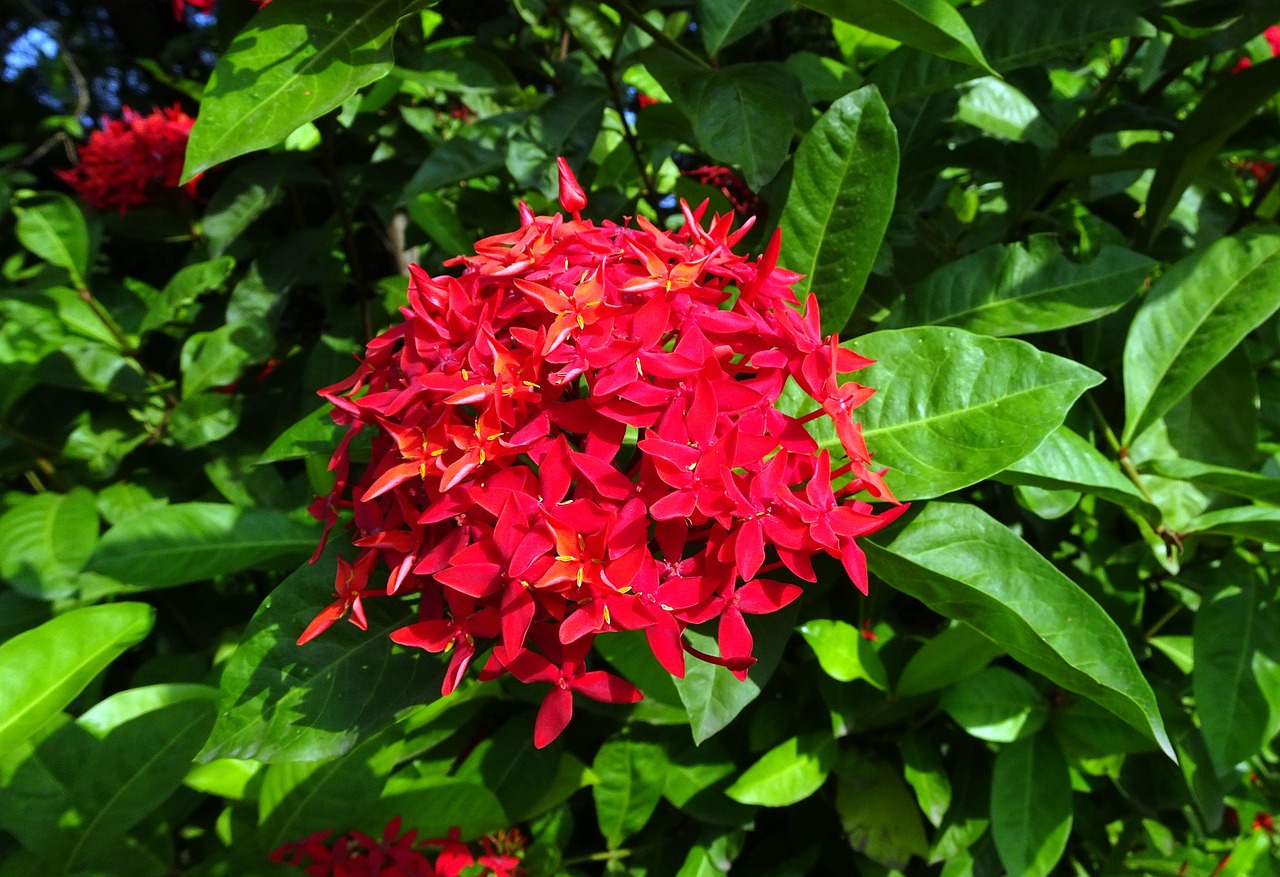
La ixora It is one of the bushy plants with which you can beautify your garden or patio. It does not grow very much, so it is interesting even to grow it in a pot, but also, it produces a large number of clusters of flowers during most of the year.
It is quite grateful; in fact, one of the few things to keep in mind to keep it healthy is that it requires plenty of water. Otherwise, you are sure to love it .
Origin and characteristics of the Ixora
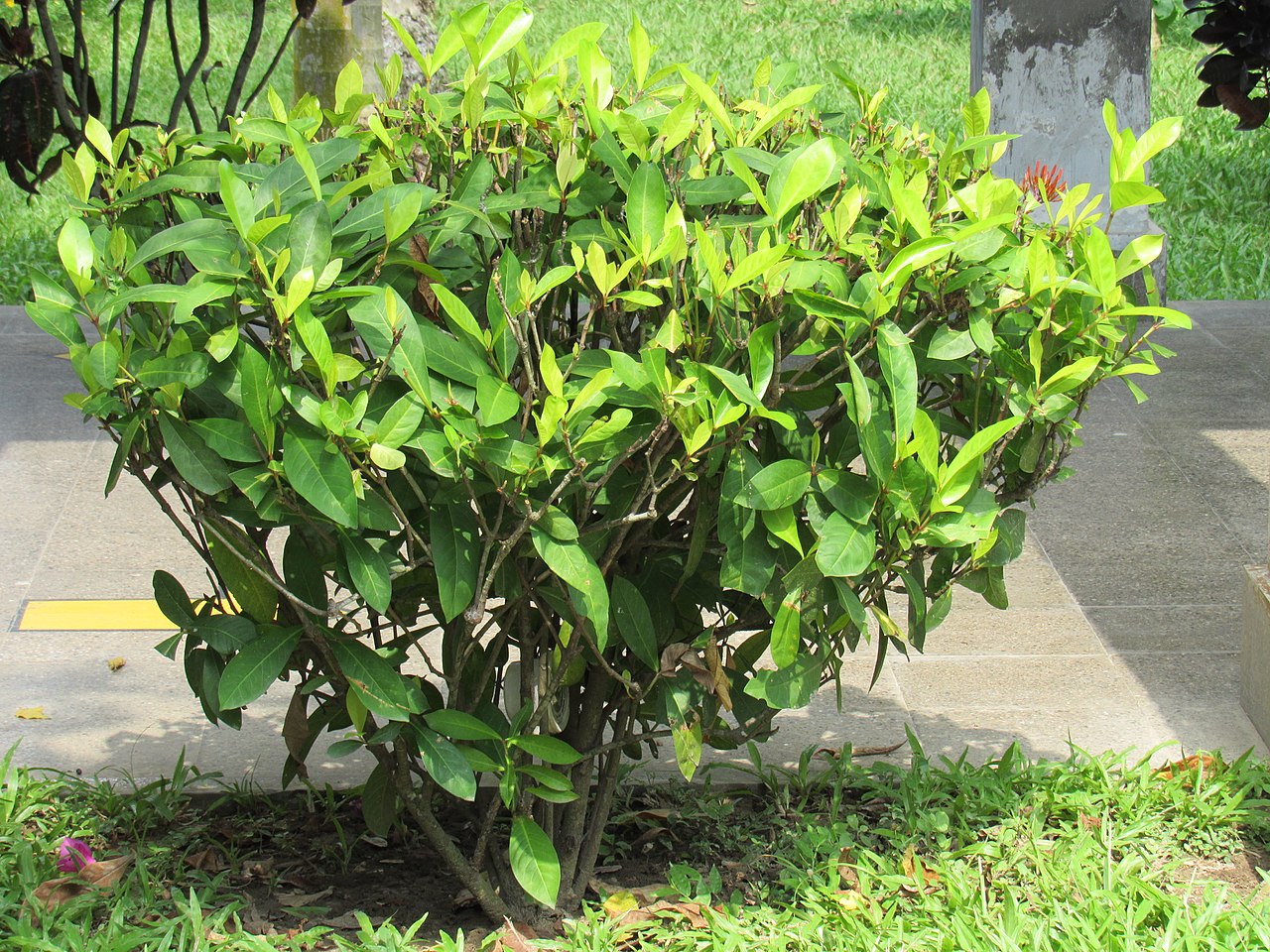
Image - Wikimedia / Afifa Afrin
The Ixora is a genus of shrub and evergreen plants native to the Asian and American tropics, although they are widely cultivated in the tropical regions of the rest of the world as well. They are known by the names of the Maltese cross, Santa Rita, coralillo, rangan, kheme, ponna, or simply ixora. They grow to a height of about 3-4 meters, with simple, lanceolate, green leaves.
They bloom for a good part of the year, except in winter. The flowers are grouped in very dense clusters, red, orange, or white. These are very attractive to pollinating insects, such as butterflies or bees, something that is undoubtedly interesting when they are kept, for example, near or in the garden.
Main species
Although the genus is made up of 529 species, the best known is this:
ixora coccinea
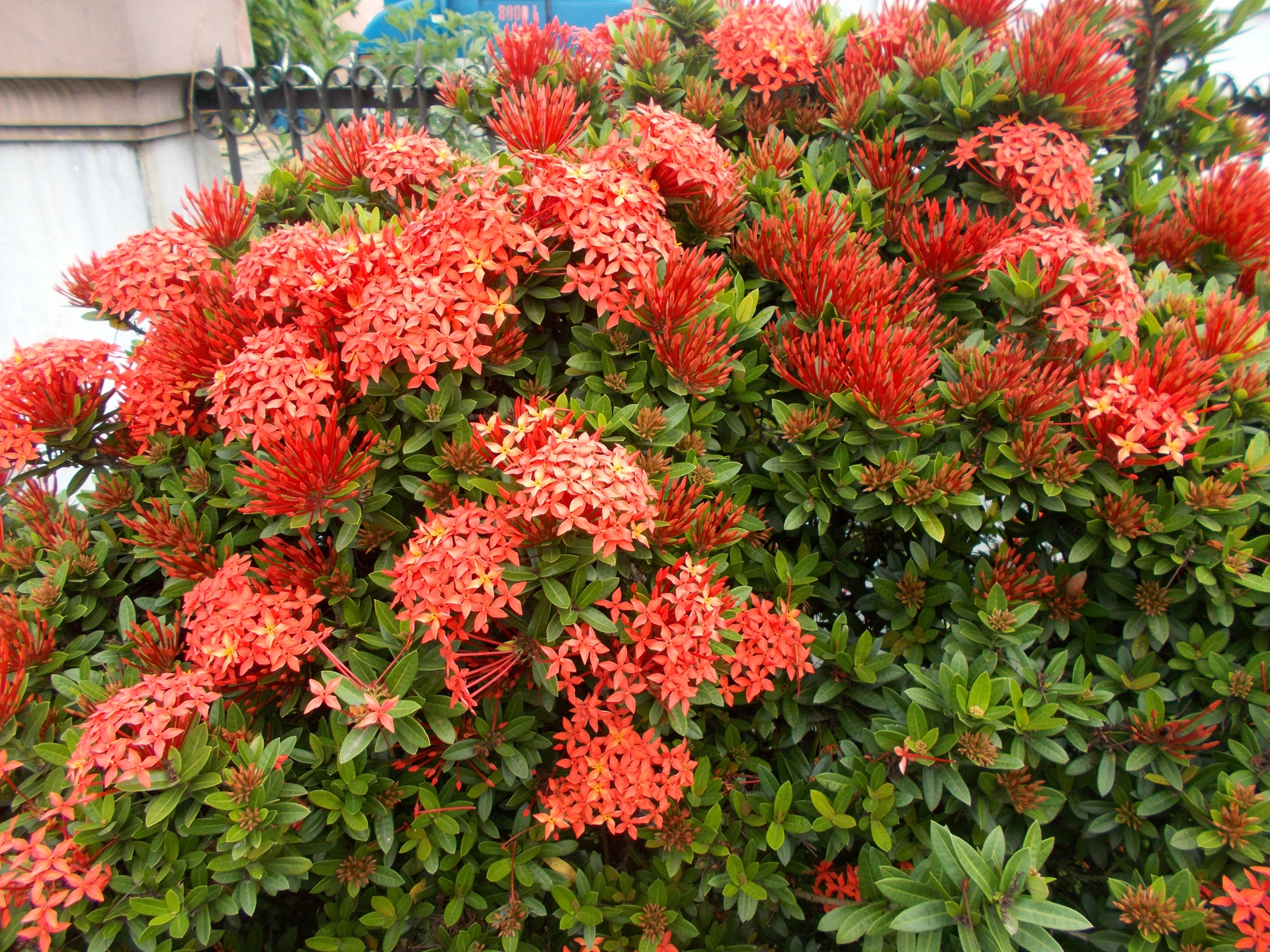
The Ixora coccinea, known as jungle geranium, flame of the woods, corallite or jungle flame, is an evergreen shrub native to southern India and Sri Lanka. It can reach a height of 1 to 3 meters, acquiring a branched bearing.
Its leaves are oblong, with smooth margins, and bright green. They can measure up to 10 centimeters long. Its flowers are tubular, yellow, white or, above all, scarlet red.
Other types of Ixora
However, there are others that are also interesting, such as:
Ixora casei
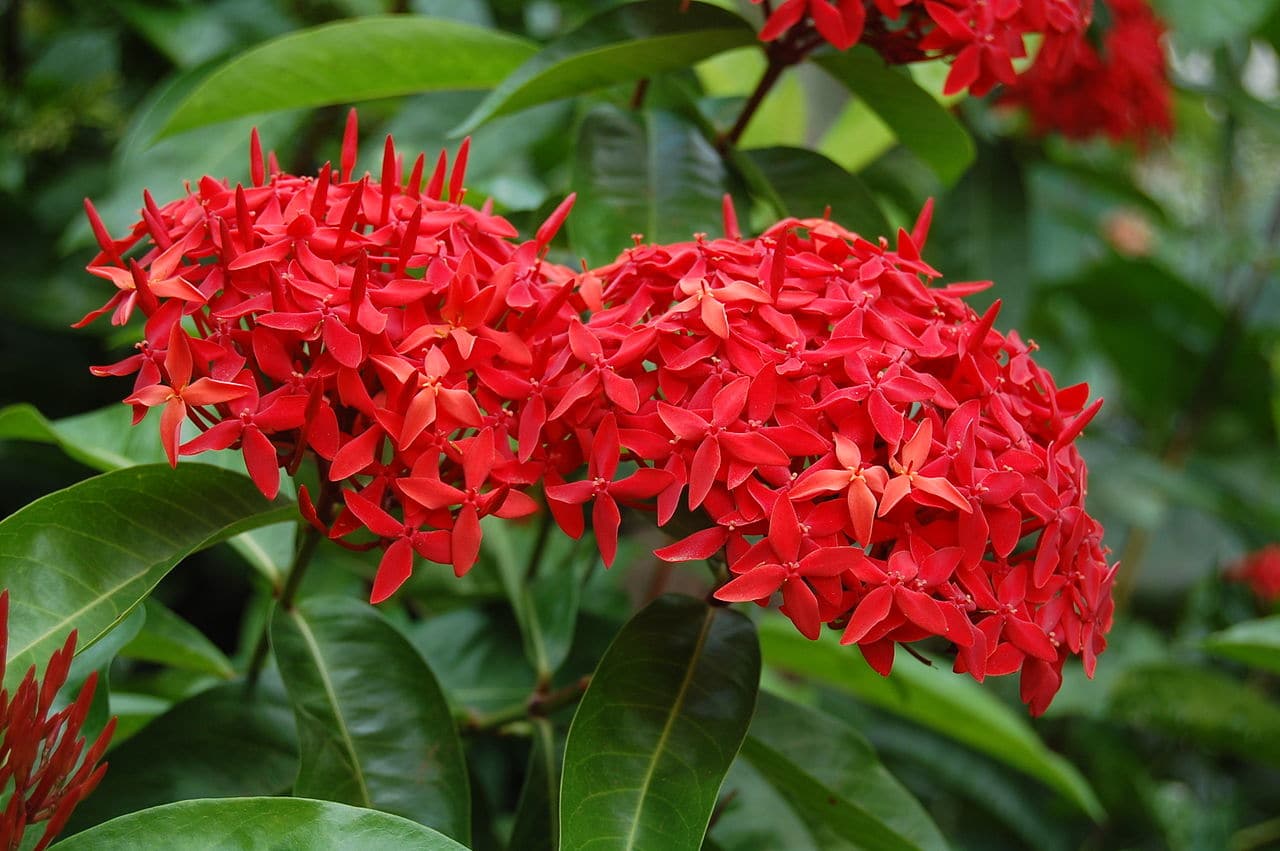
Image - Wikimedia / Meneerke bloem
La Ixora casei is an evergreen shrub native to Micronesia, which reaches a height of up to 2 meters. Its leaves are simple and lanceolate, green in color. Its flowers are similar to those of the I. coccinea, grouping in clusters of reddish color.
ixora Finlaysonian
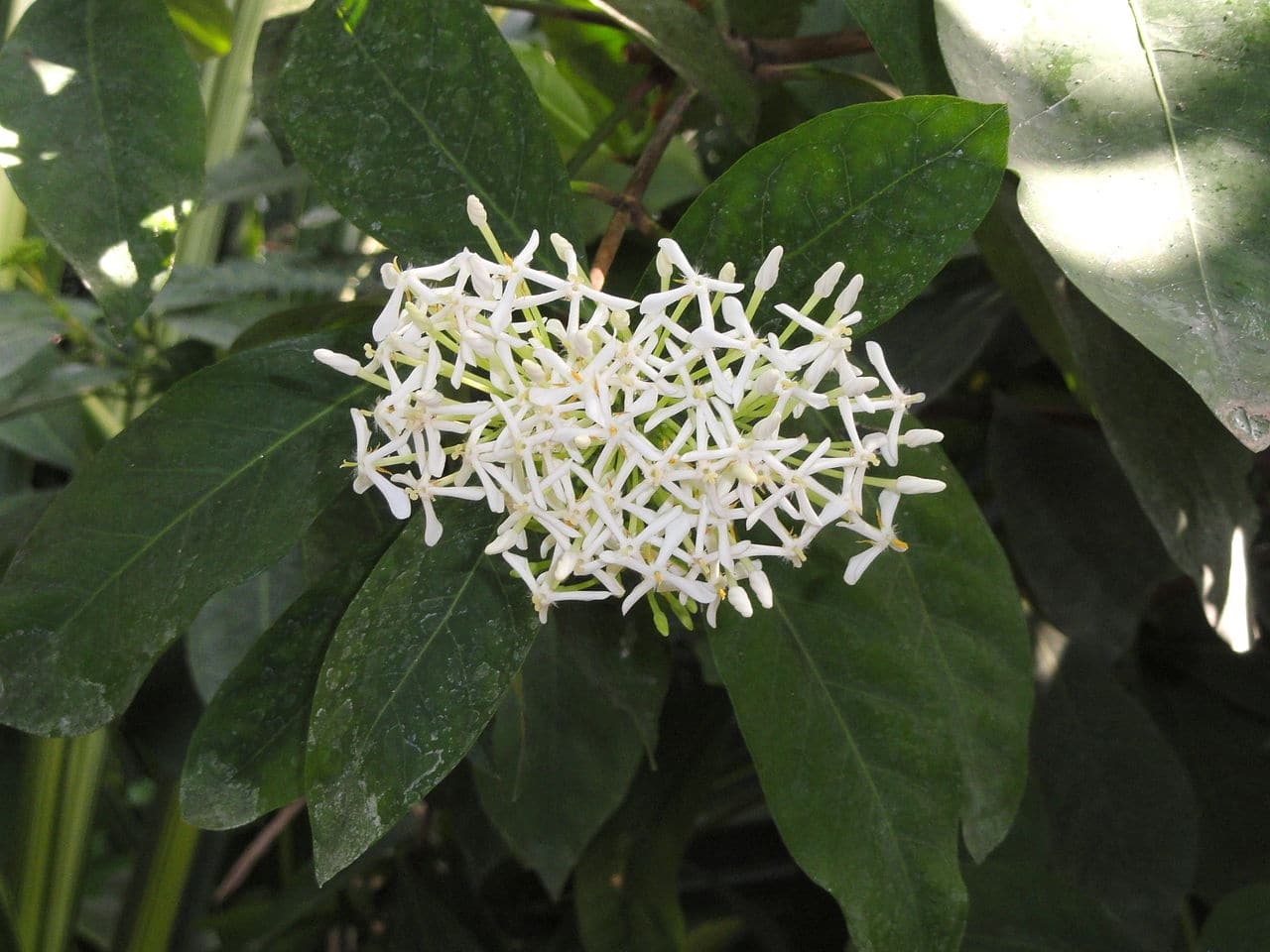
La ixora Finlaysonian is an evergreen shrub or tree native to Asia that reaches a height of up to 6 meters. The leaves are lanceolate, simple, and green. It produces white flowers, in large clusters.
What are the care they need?
If you want to have a copy, write down these tips so you don't forget anything 🙂:
Location
They are plants that, whenever possible, they must be placed outside, in full sun. However, they will not have problems if they are put in semi-shade while that place is bright.
Earth
- Flower pot: the substrate to choose has to be rich in organic matter and also somewhat porous so that the water drainage is ideal. For example, a good mix would be mulch with 30% perlite. Also, the pot must have holes in its base, otherwise the roots of the Ixora would rot.
- Garden: the land must be fertile, well drained.
Irrigation
As we mentioned, they need frequent waterings. During the summer they have to be watered about 3-4 times a week, while the rest of the year 2 weekly irrigations will suffice, or even less if the environment is humid.
If in doubt, check the moisture in the substrate or soil before moistening it again.
Subscriber
From early spring to late summer It is interesting to pay it with fertilizers for flowering plants, following the indications specified on the package.
Another option is to use organic fertilizers, such as guano, algae extract, or compost.
Multiplication
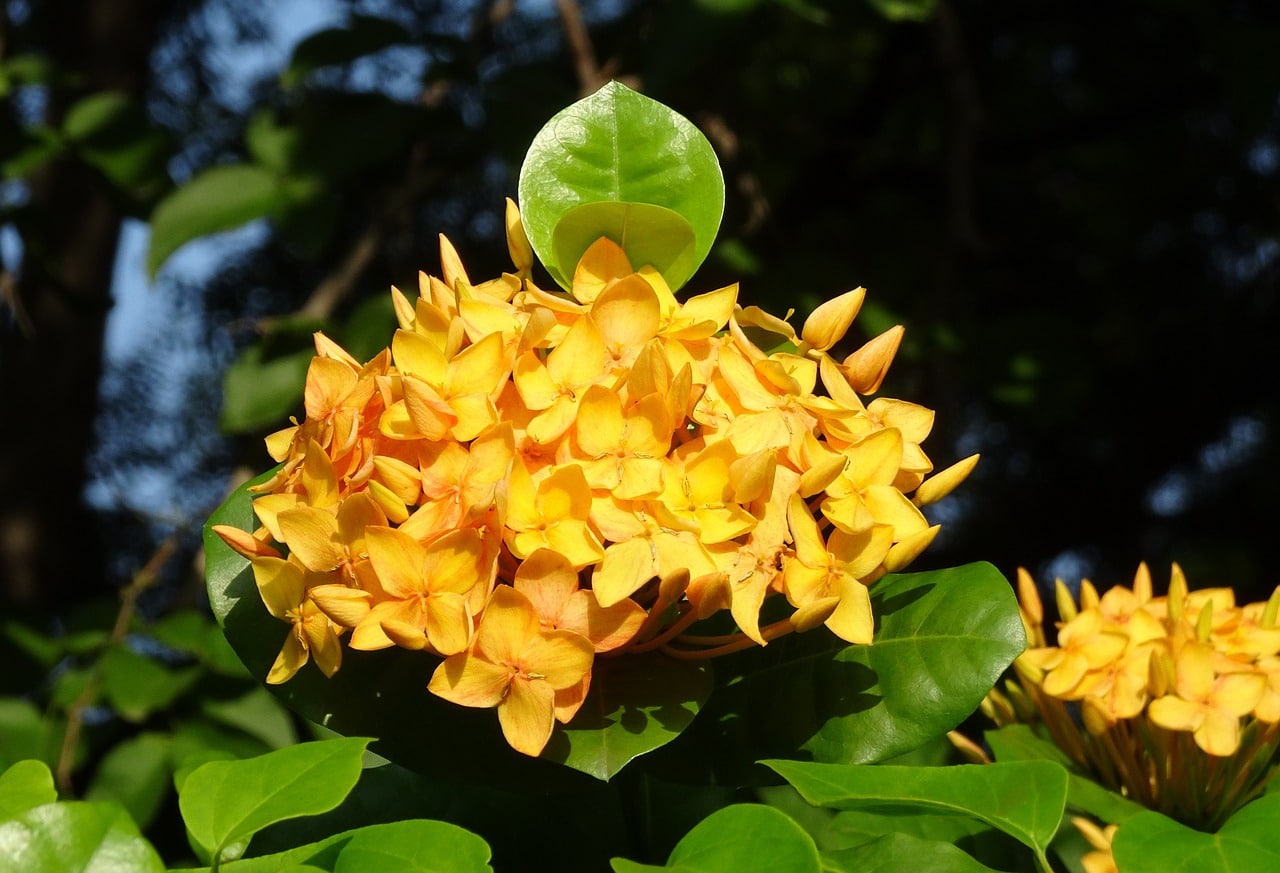
The Ixora They multiply by seeds and cuttings in spring.
Seeds
Following this step by step:
- First, choose a seedbed that has a hole in its base that the water can come out of. A seedbed tray is highly recommended, although so are flower pots.
- Then fill it with a mixture of equal parts perlite mulch.
- Then, place a maximum of two seeds in each seedbed, making sure they are as far apart as possible.
- Then cover them with a thin layer of substrate.
- Finally, water and place the seedbed outside, in full sun.
They will germinate in about 5-7 days.
Cuttings
You just have to cut a stem that has more than two knots or buds, and immerse it in a glass of water. It is important that it covers 2 knots, and that said liquid is renewed and that the container is cleaned every one or two days.
After about a month and a half, it will have enough roots to be planted in a pot.
Pruning
At the end of winter, or after flowering if it is a plant that already produces flowers. They have to remove dry leaves and wilted flowers whenever necessary, as well as trim overgrown branches with disinfected pruning shears.
Rusticity
They do not resist frost. The minimum temperature they can endure is 10 degrees, as long as it is for a short time. In any case, if you live in an area where winters are cold, it is a good idea to keep them indoors, in a bright room, and away from the air conditioning currents.
Where to buy Ixora?
You can buy seeds from here.
We hope it has been of interest to you 🙂.